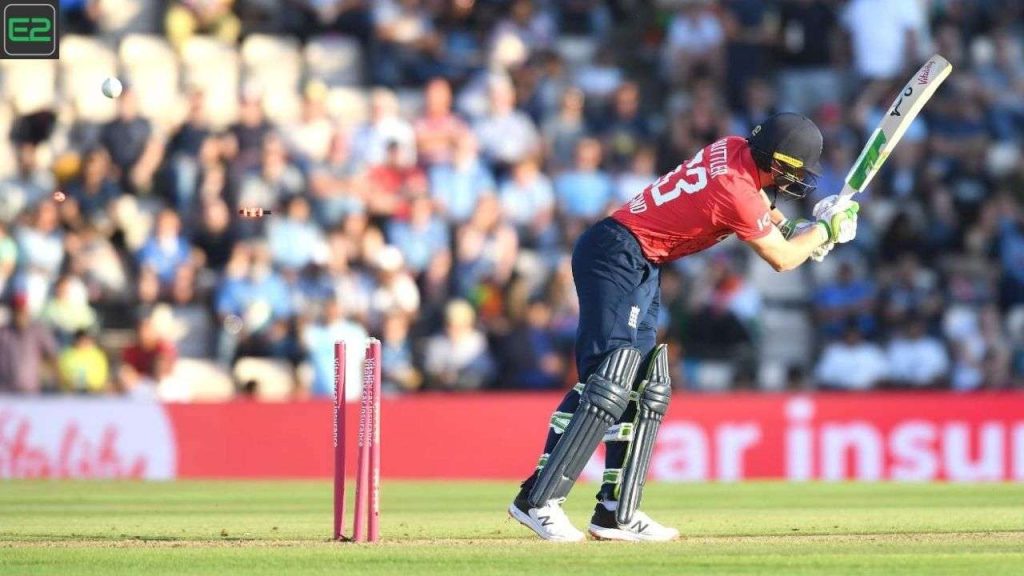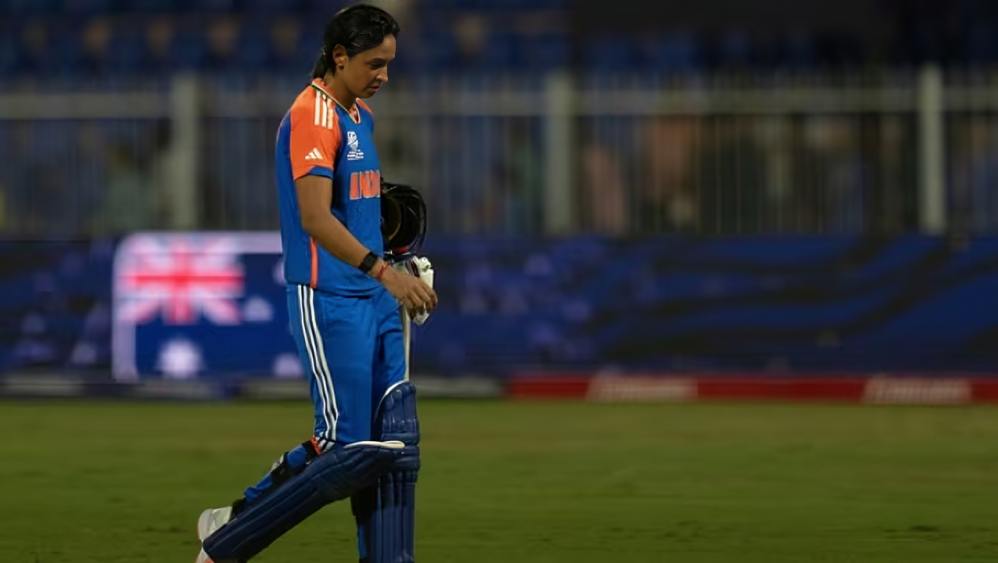Mount Maunganui Cricket Stadium, formally known as Bay Oval, is one of the prominent cricket grounds in New Zealand. Located in the picturesque town of Mount Maunganui, within the Tauranga region, this stadium has become a key venue for international and domestic cricket. With its scenic location and state-of-the-art facilities, it has hosted numerous high-profile matches, including One Day Internationals (ODIs), T20s, and Test matches.
One of the critical aspects of any cricket stadium is the dimensions of the playing field, particularly the boundary length. The boundary length directly impacts the dynamics of a match by influencing how runs are scored and how teams strategize. This article delves into the boundary length of Mount Maunganui Cricket Stadium, exploring its current dimensions, historical context, and how these measurements influence the game played at this iconic venue.
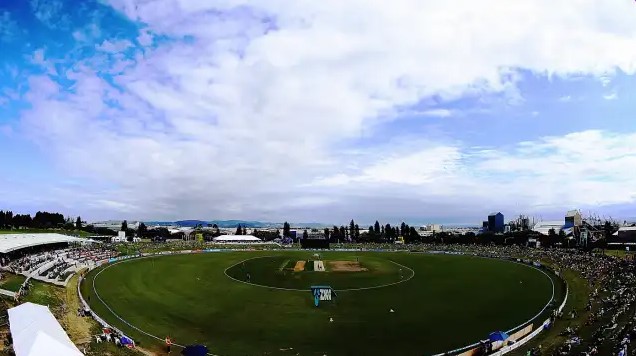
Introduction to Mount Maunganui Cricket Stadium
Bay Oval, or Mount Maunganui Cricket Stadium, is located on the north island of New Zealand, situated between the stunning Mount Maunganui and the coastline of Tauranga Harbour. Established in 2007, the venue quickly gained a reputation for its excellent pitch conditions and favorable playing environment for both batsmen and bowlers. The ground’s proximity to the ocean and its beautiful surroundings make it one of the most scenic cricket venues in the world.
The stadium has a seating capacity of approximately 10,000, though it can accommodate more spectators with temporary seating during large international events. It is the home ground for the Bay of Plenty cricket team and regularly hosts matches for New Zealand’s national team. Over the years, it has hosted numerous One Day International matches and T20 fixtures, attracting large crowds and providing a competitive environment for cricketers.
The Importance of Boundary Length in Cricket
Boundary length is a critical factor in cricket, directly influencing both batting and bowling strategies. The shorter the boundary, the easier it is for batsmen to clear the rope, leading to more frequent boundaries. Conversely, longer boundaries require batsmen to hit the ball harder and more accurately, which often leads to greater challenges for the attacking players.
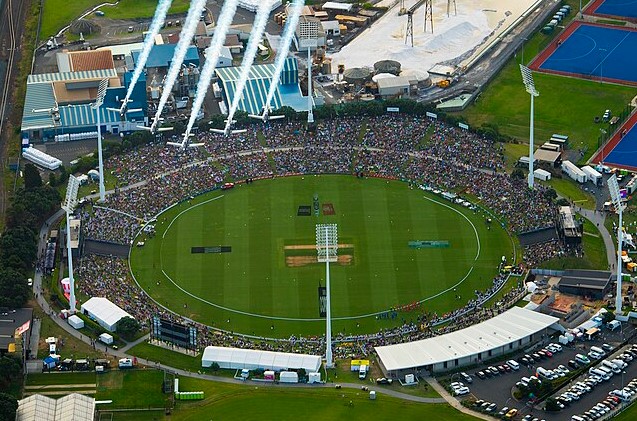
Additionally, the boundary length impacts the fielding strategy. With larger boundaries, fielding teams must position their players deeper to restrict boundaries, while shorter boundaries allow for more aggressive field placements.
Mount Maunganui Cricket Ground’s Boundary Dimensions
Mount Maunganui Cricket Ground is an oval-shaped field with varying boundary lengths, like most modern cricket stadiums. The dimensions are not symmetrical, with differences in distances across different parts of the ground.
1. Straight Boundaries
The straight boundaries at Bay Oval are typically one of the shorter distances on the field. The straight boundaries run along the line from the bowler’s end to the opposite side of the ground, providing batsmen with opportunities to hit balls down the ground.
- Straight boundary length: The approximate distance from the center of the pitch to the straight boundary is 60 to 65 meters.
2. Square Boundaries
Square boundaries are typically longer than the straight boundaries. These run perpendicular to the line of play, along the edges of the oval. Hitting the ball through the covers or on the leg side often requires batsmen to clear longer distances.

- Square boundary length: The approximate distance from the center to the square boundary is 70 to 75 meters.
3. Longest Boundaries
The longest boundaries at Bay Oval are typically found at the deep mid-wicket and deep extra cover positions. These distances are the greatest across the field, presenting a significant challenge for batsmen attempting to clear the boundary.
- Longest boundary length: The longest boundary distance, typically located at deep mid-wicket, can be 75 to 80 meters.
Boundary Length Breakdown for Mount Maunganui Cricket Ground
| Boundary Type | Approximate Distance |
|---|---|
| Straight Boundary | 60 to 65 meters |
| Square Boundary | 70 to 75 meters |
| Longest Boundary | 75 to 80 meters |
Factors Influencing Boundary Length at Mount Maunganui
The boundary dimensions at Mount Maunganui Cricket Ground are influenced by several factors, including the natural shape of the land, the requirements of modern cricket, and the influence of other international stadiums.
1. Oval Shape of the Ground
The ground is designed in an oval shape, which leads to differences in the distance between the center and the boundary at various points. The boundary is typically longer along the sides (square boundaries) and shorter along the straight boundaries. The variation in length means that batsmen must adapt their shots based on which area of the field they are targeting.
2. Influence of Wind and Weather

Being located near the coastline, Mount Maunganui is subject to varying weather conditions, including wind. Wind can play a significant role in the effectiveness of boundary shots, as it may either help the ball travel further or reduce the distance a ball can travel when hit in the air. On windy days, the batsmen might adjust their shot-making, particularly in areas where the wind helps the ball sail over the ropes.
3. Pitch and Outfield Conditions
Bay Oval is known for its good pitch conditions, which typically favor both batsmen and bowlers. The outfield at Mount Maunganui is fast, which means that once the ball crosses the line of the boundary, it will typically roll quickly to the ropes. This makes hitting the ball past the fielders more feasible, especially on shorter boundaries.
4. Influence of Other Grounds
As a newer venue, Bay Oval has taken into account the best practices and dimensions of other international cricket grounds. For example, the boundary length at Mount Maunganui is similar to that of other New Zealand venues like Eden Park and Hagley Oval, which have slightly shorter straight boundaries but longer square boundaries. These considerations ensure that the boundary dimensions at Bay Oval provide a fair and competitive environment for both teams.
Impact of Boundary Length on Batting and Bowling
The varying boundary lengths at Mount Maunganui significantly impact both batting and bowling strategies. Here’s how they shape the game:
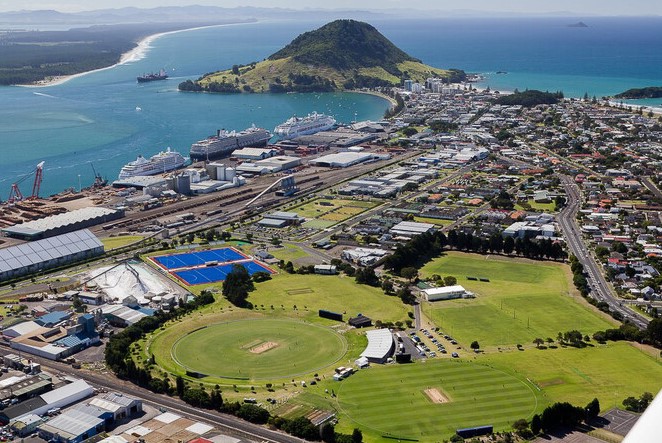
Batting Impact
- Power Hitting: The relatively short straight boundaries at Bay Oval encourage power-hitting down the ground. Batsmen with the ability to clear the straight boundary can score quicker, especially during the death overs of a limited-overs match.
- Placement of Shots: Longer square boundaries require more placement and precision, particularly when batsmen attempt to guide the ball to the leg side or through the covers. Batsmen need to hit the ball in the air and with the right timing to clear the longer boundaries.
- Boundary Scoring: Given the variation in boundary lengths, it is important for batsmen to adapt their strategy depending on where the ball is hit. For example, clearing the ropes in the deep mid-wicket region is challenging, but with the right approach, it is possible.
Bowling Impact
- Line and Length: Bowlers often adjust their length depending on the boundary size. On shorter straight boundaries, fast bowlers may bowl fuller deliveries to prevent the ball from being driven for boundaries. Spinners, on the other hand, might attempt to exploit the longer square boundaries, inducing the batsman to play aerial shots.
- Field Placements: Given the different boundary lengths, fielding captains often adjust their field placements. For shorter boundaries, captains may place boundary riders in key areas, while on longer boundaries, the fielding team may opt to station fielders deeper to prevent sixes.
- Variations in Bowling: Bowlers will often use variations in pace and spin to force batsmen into making mistakes, particularly on longer square boundaries where hitting sixes is harder.
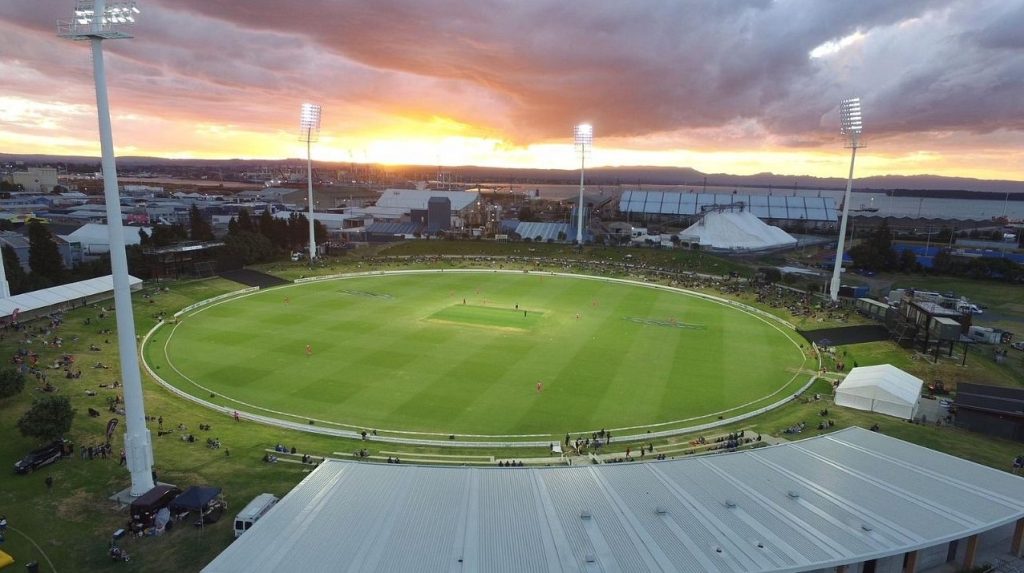
Comparing Mount Maunganui’s Boundary Length with Other Prominent Grounds
It is insightful to compare the boundary length of Mount Maunganui with other major cricket grounds worldwide to understand its standing among global venues.
| Stadium | Straight Boundary Length | Square Boundary Length | Longest Boundary Length |
|---|---|---|---|
| Mount Maunganui (Bay Oval, New Zealand) | 60-65 meters | 70-75 meters | 75-80 meters |
| Lord’s (London, UK) | 61 meters | 70 meters | 82 meters |
| Melbourne Cricket Ground (MCG, Australia) | 70-90 meters | 80 meters | 90 meters |
| Eden Park (Auckland, New Zealand) | 55 meters | 65 meters | 70 meters |
| Wankhede Stadium (Mumbai, India) | 60 meters | 70 meters | 80 meters |
From the comparison, Mount Maunganui has relatively shorter straight boundaries when compared to some other international grounds, but its square boundaries and the longest boundary fall within the range of most other international venues. This provides a balanced challenge for both batsmen and bowlers.
The boundary length of Mount Maunganui Cricket Ground plays a crucial role in shaping the dynamics of the game played at Bay Oval. The combination of shorter straight boundaries and longer square boundaries makes it an exciting venue for batsmen, while the variations in boundary distances provide bowlers with opportunities to strategize effectively.

Understanding these boundary dimensions allows players and teams to tailor their strategies accordingly, whether it is for a limited-overs match or a Test match. With the beautiful setting, excellent facilities, and fair boundary dimensions, Mount Maunganui continues to be a beloved venue for international cricket.







